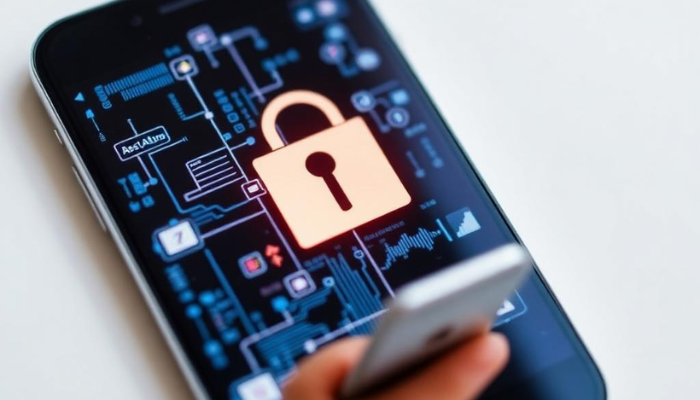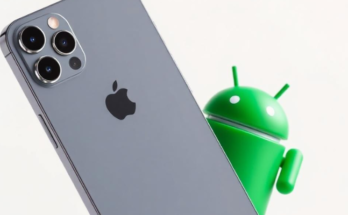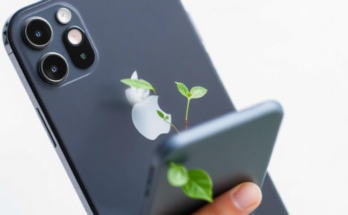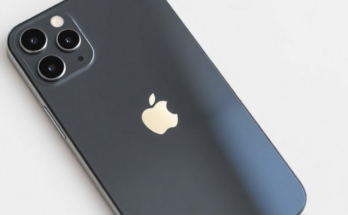For today’s smartphones are not only our personal companions but also our interfaces to most aspects in our daily lives, protecting our gadget is only but a must. This admirable tool, iPhone, possess a solid built with some bad features that could compromise important information if not repaired. In this detailed article, we would look at important tips that would enable you secure your iPhone in the present world.
Understanding iPhone Security
Before delving into specific tips, it’s crucial to understand the security measures that Apple incorporates into its iOS. iPhones come equipped with various features designed to safeguard your data, including:
Data Encryption: The iPhone data itself is also protected with encryption, and that even if you lose your phone, there is little risk of unauthorized access to it.
Face ID and Touch ID: The biometric authentication options offered by apple seal the security part making it quite hard for an unauthorized person to operate your phone.
Secure Enclave: A special chip needed to control more vulnerable data, including passwords and encryption keys, would guarantee the holders’ protection.
However, these are robust features and they focus on the fact that users have to ‘self-apply’ security on the iPhone. Let me share key preventive measures you need to take to protect your data.
Keep Your iOS Updated
Of course, one of the easiest and most effective ways is to make sure you have the latest version of iOS installed. Apple often sends out new updates, which are designed to fix flaws in the system’s security. Here’s how to ensure your device is running the latest version:
- Go to Settings > General > Software Update.
- If an update is available, tap Download and Install.
Enable Two-Factor Authentication
Two-factor authentication (2FA) adds a layer of security to your Apple ID. With 2FA enabled, you’ll need not only your password but also a verification code sent to your trusted devices. Here’s how to turn on 2FA:
- Navigate to Settings > [Your Name] > Password & Security.
- Tap on Two-Factor Authentication, then press Continue.
Use Strong Passwords
Creating strong, unique passwords is vital in safeguarding your accounts. Avoid easily guessable passwords and consider using a password manager to generate and store complex passwords.
- A strong password typically includes a mixture of uppercase and lowercase letters, numbers, and special characters.
Set Up Find My iPhone
The Find My iPhone feature allows you to locate your device if it’s lost or stolen. It also enables you to remotely lock or erase your iPhone, protecting your information from prying eyes. To enable this feature:
- Go to Settings > [Your Name] > Find My.
- Tap on Find My iPhone and toggle it on.
Regularly Review App Permissions
Apps often request access to various aspects of your iPhone, such as your camera, microphone, and location. Review the permissions granted to your apps and revoke access to any unnecessary permissions.
- To do this, go to Settings > Privacy and select the relevant category (e.g., Location Services). Adjust the permissions according to your preferences.
Be Cautious with Public Wi-Fi
Public Wi-Fi networks can pose significant security risks. Cybercriminals often exploit these networks to intercept data. If you must use public Wi-Fi, employ a Virtual Private Network (VPN) to encrypt your internet connection, safeguarding your data from potential breaches.
Enable Automatic Backups
Regular backups ensure that you keep your data in case of theft or damage. With iCloud, your iPhone can automatically back up your essential data. To enable automatic backups:
- Go to Settings > [Your Name] > iCloud > iCloud Backup.
- Toggle on iCloud Backup and select Back Up Now to ensure your data is saved.
Be Wary of Phishing Attacks
Phishing attacks often come in the form of emails or text messages that appear to be legitimate. They usually aim to steal your personal information or login credentials. To prevent falling victim to these scams:
- Always verify the source of any message before clicking on links.
- Look for signs of phishing, such as poor grammar, generic greetings, or implausible requests.
Utilize App Store Only
When downloading apps, always stick to the Apple App Store. Other sources may host malicious software that can compromise your device. Before downloading an app, check its ratings, reviews, and developer details to ensure its authenticity.
Lock Your Screen
Setting a passcode for your iPhone is one of the most fundamental steps to securing your device. To enhance security:
- Go to Settings > Face ID & Passcode or Touch ID & Passcode.
- Set a six-digit passcode for better security (or use a longer alphanumeric passcode).
Disable Lock Screen Notifications
Lock screen notifications can reveal sensitive information to people who have access to your device, even when it’s locked. To turn off notifications on the lock screen:
- Open Settings > Notifications.
- Select an app and toggle off Show on the Lock Screen.
Regularly Monitor Your Accounts
Keep a close eye on your accounts for any suspicious activity. If you notice unauthorized transactions or unfamiliar logins, change your passwords immediately and consider enabling additional security measures, such as notifications for account logins.
Use Secure Websites
When browsing the web, ensure that the websites you visit use HTTPS, especially when entering sensitive information. Look for a padlock icon in the URL bar, indicating a secure connection.
Enable Security Features for Apps
Many apps come with their security settings. For instance, banking apps often allow you to set up additional authentication methods. Always delve into app settings and utilize any available security features.
Be Mindful of Bluetooth Connections
Bluetooth connectivity can pose a security risk. To minimize potential exposure, disable Bluetooth when not in use and avoid connecting to unfamiliar devices. You can toggle Bluetooth on and off from the Control Center or in the Settings menu.
Conclusion
As technology advances, so do the methods employed by cybercriminals. By implementing these iPhone security tips, you can significantly reduce the risk of your data being compromised. Prioritize your online safety by staying informed about the latest security practices and keeping your iPhone updated. Ultimately, safeguarding your iPhone is not just about protecting your device but also about preserving your privacy and peace of mind in the digital age.

By following these principles and regularly reviewing your security settings, you will not only protect your information but also enjoy a more secure digital lifestyle. Stay vigilant and proactive, ensuring your iPhone remains a reliable tool for both personal and professional use, wholly shielded from digital threats.
By adhering to these guidelines, you can transform your iPhone from a powerful communication tool to a well-armored fortress of personal information, enhancing your digital safety and trust in the technology you use every day.




https://hrv-club.ru/forums/index.php?autocom=gallery&req=si&img=6883